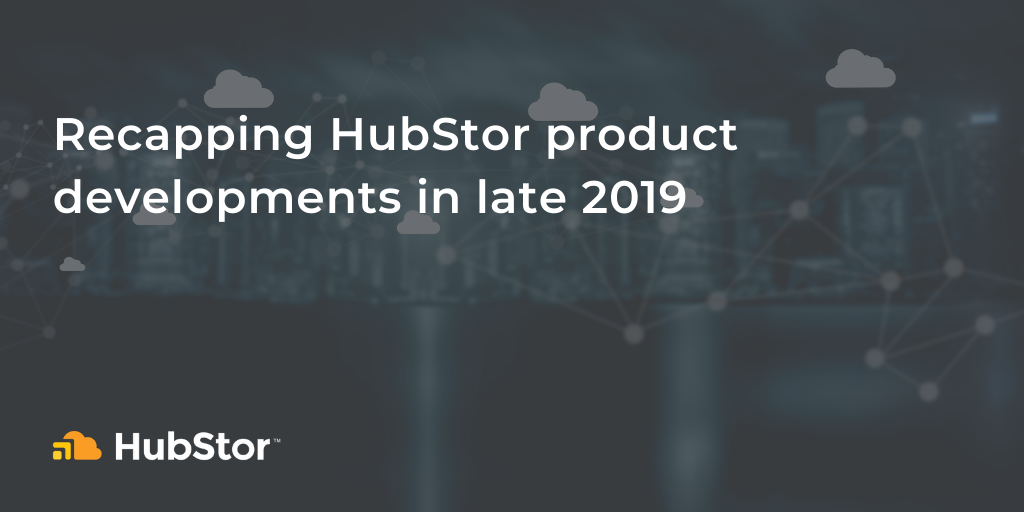In the final months of 2019, the development team at HubStor released several major features into the HubStor platform that are worthy of a recapping, as follows:
Box integration
Multi-tenant SaaS applications typically offer their users little more than a recycle bin to recover from unwanted data deletions. Unfortunately, more and more organizations are learning this the hard way through either accidental or malicious deletions.
To help organizations that want a proper backup and recovery of their SaaS data, HubStor is extending the list of supported SaaS apps that you can protect with the HubStor platform.
Box is a very popular collaboration SaaS offering that many enterprise organizations like to use. HubStor now includes an integration to Box that uses the Box APIs for an efficient and scalable backup.
In developing HubStor’s integration to Box, we invested heavily in making sure that the backup and recovery capabilities are simple and flexible. A few of the key features are as follows:
- Folders, files, and version histories – HubStor maintains a backup of folder structures in addition to the individual files and the version history of each.
- Flexible backup policy scoping – HubStor can protect all users’ data which will automatically enroll new users, or apply unique backup policies to specific sets of users.
- Box metadata – HubStor can restore tags and notes on files also.
AWS S3 connector
Similar to SaaS apps, PaaS cloud storage accounts like Azure Blob Storage and AWS S3 have high availability, but no true backup that would give you a recovery copy to protect against accidental or malicious deletions.
HubStor now includes S3 capabilities to help organizations protect data in S3 storage accounts, as well as migrate data from S3 into HubStor, and export data from HubStor to S3.
For backup, HubStor can protect an S3 account by maintaining a synthetic full backup to any cloud region of your choice. Restoring individual files or performing bulk recovery operations are both supported, either to original or alternate locations.
Migration connector for EMC Centera
EMC Centera was the first storage device that became widely adopted for disk-based immutable storage. It is now in the category of legacy IT infrastructure. However, many organizations are still relying on it for their storage compliance.
Whether you are in financial services, healthcare, or any other regulated industry and using Centera, you know the clock is ticking to migrate to something new.
The Centera migration problem is twofold: it is a specialized storage migration and most alternative compliance storage solutions are expensive.
HubStor now solves both problems. HubStor is known for providing SEA 17a-4 compliant WORM storage, as well as immutable retention for other legal and compliance requirements. And with the introduction of HubStor migration software for Centera, you have an easy path to get from Centera to HubStor with seamless chain of custody.
In developing our Centera integration, we made it simple to capture the source application’s directory structure and inherit that into HubStor along with the full item names and retention periods.
For a closer look at how the Centera migration into HubStor works, see here and here.
Big plans for 2020
HubStor will be unleashing several significant product developments in 2020. And in doing so, we will stay true to our promise of consumption-based pricing, which means existing customers get access to all the goodies we introduce without having to worry about additional purchasing, new subscriptions, or complex licensing schemes. All of the capabilities are readily available in the platform to all customers.
So stay tuned for more updates coming soon.


